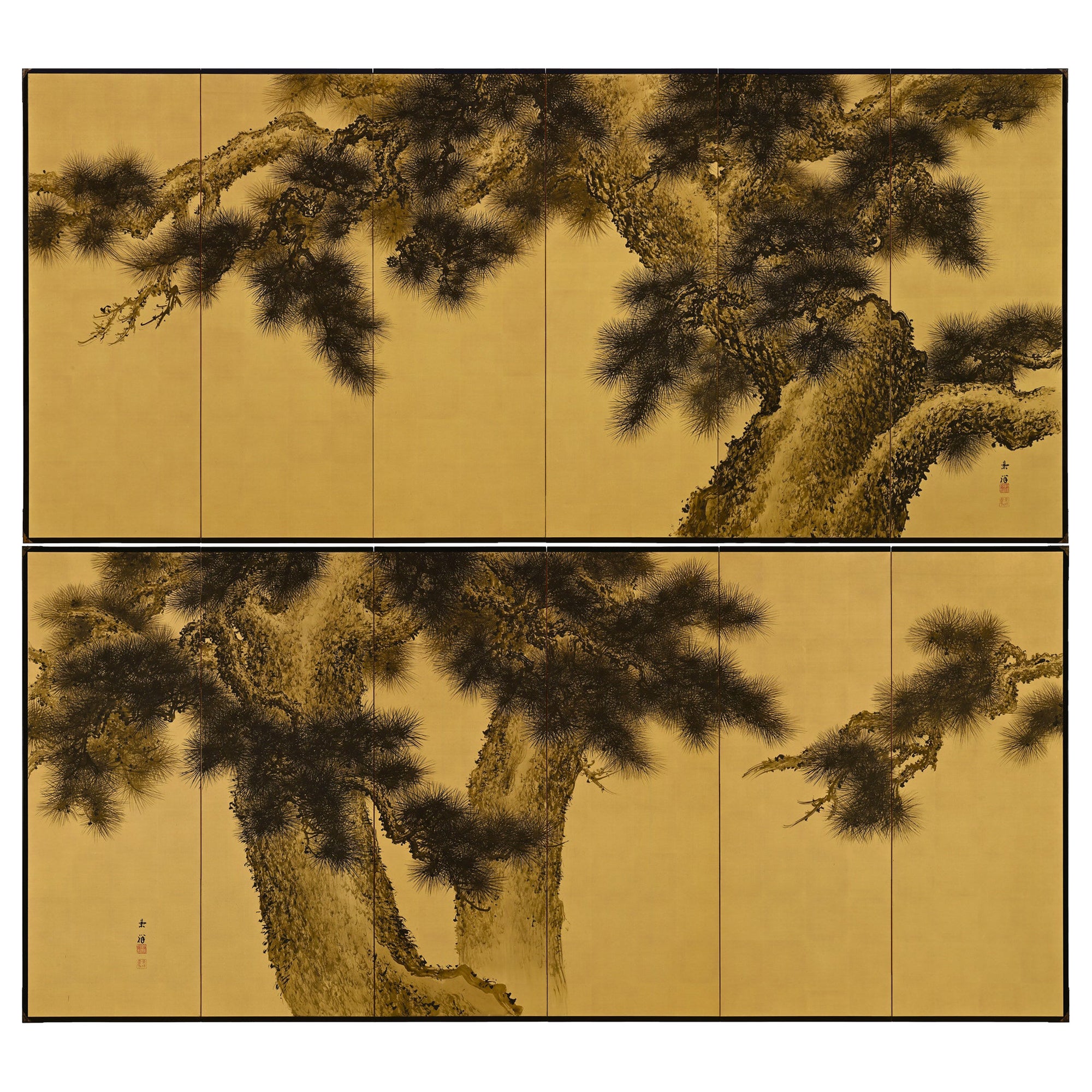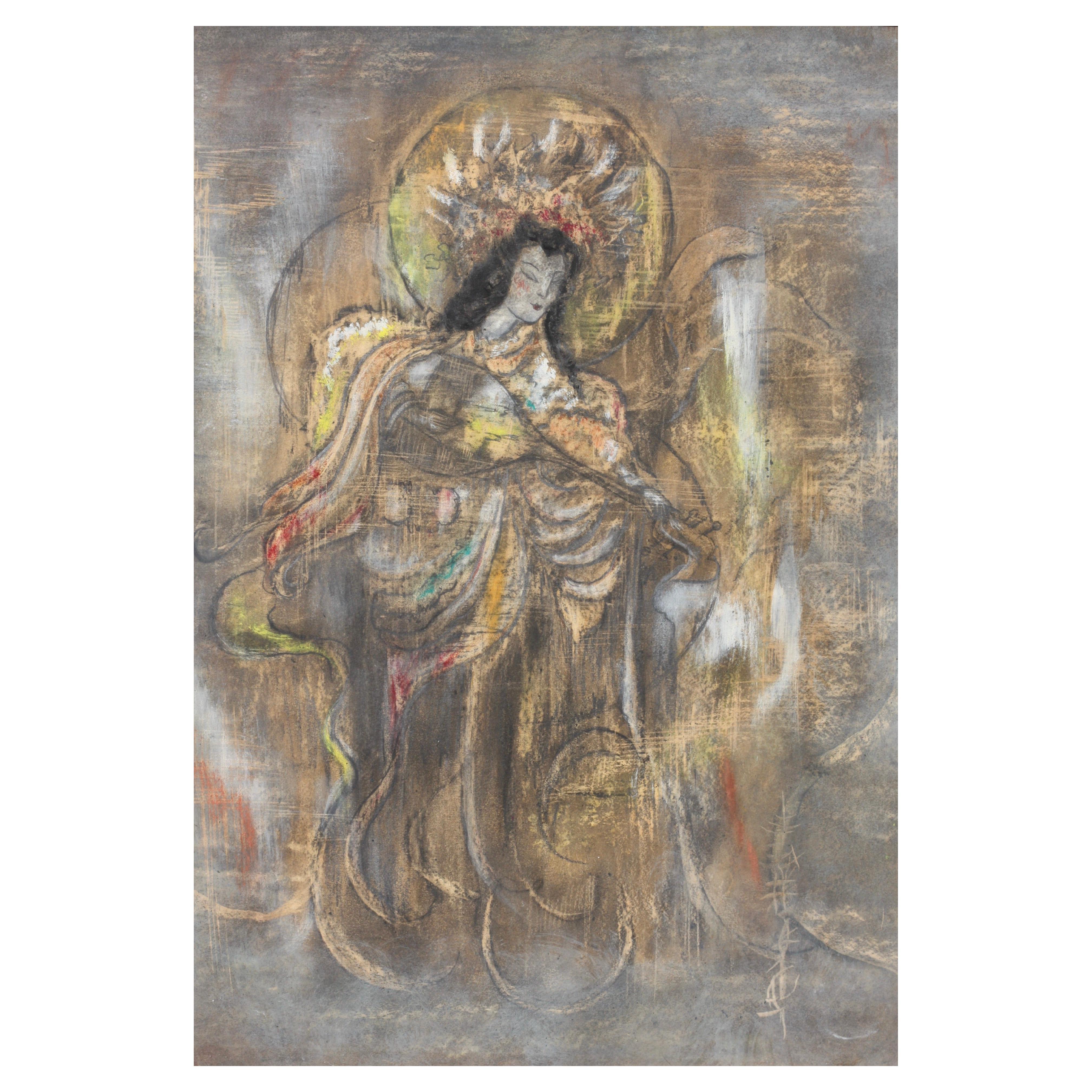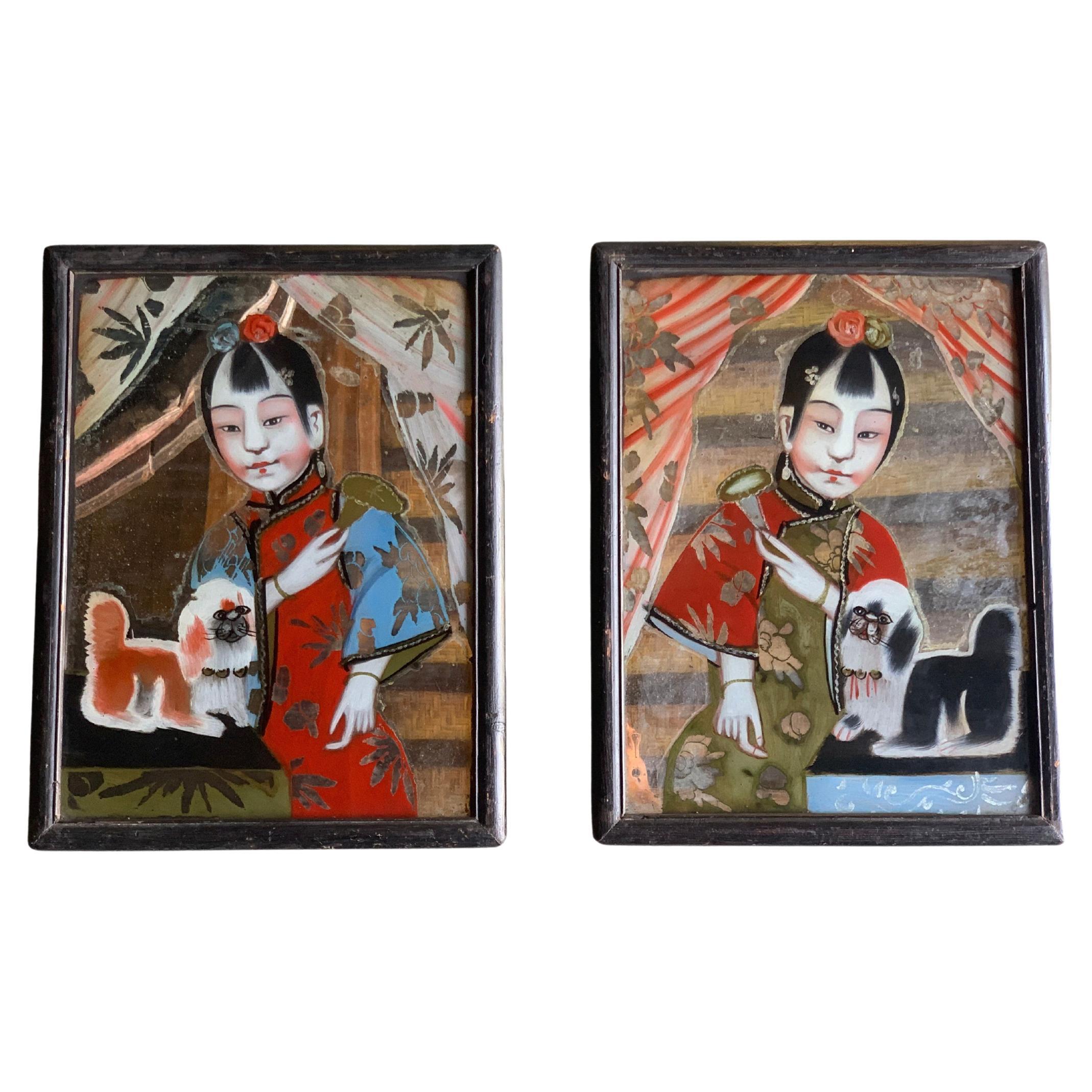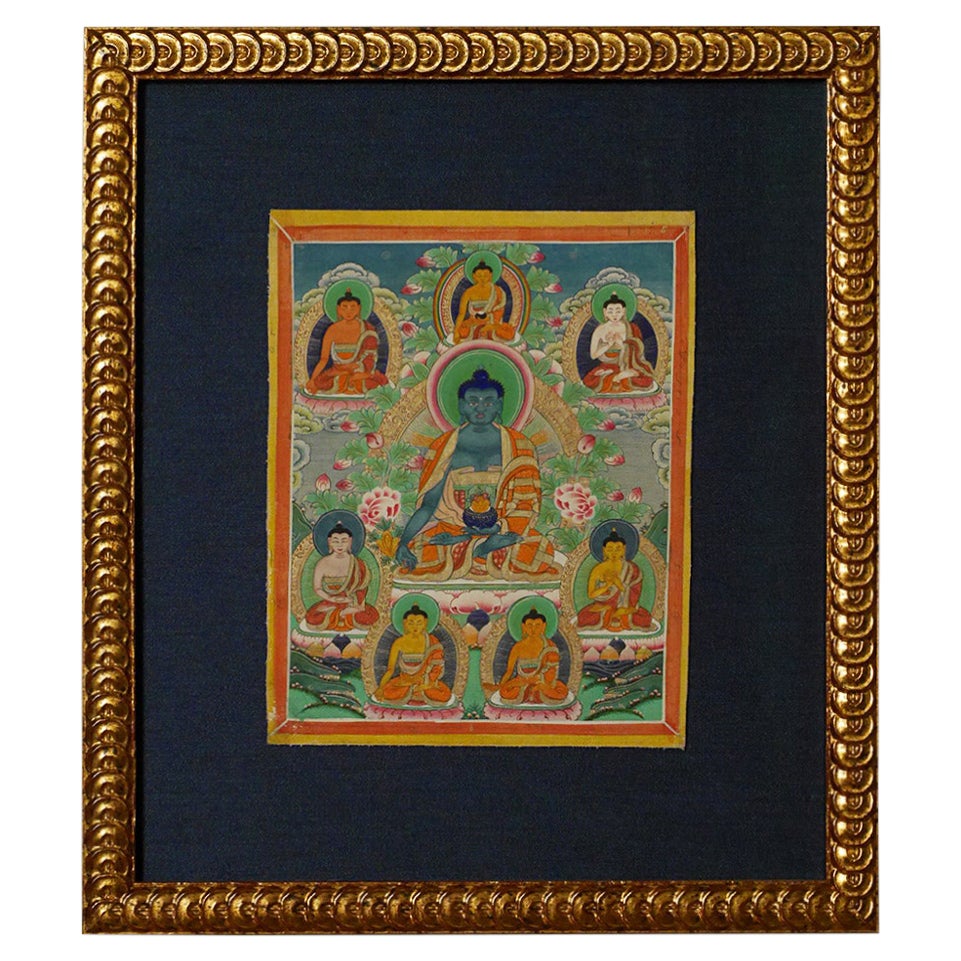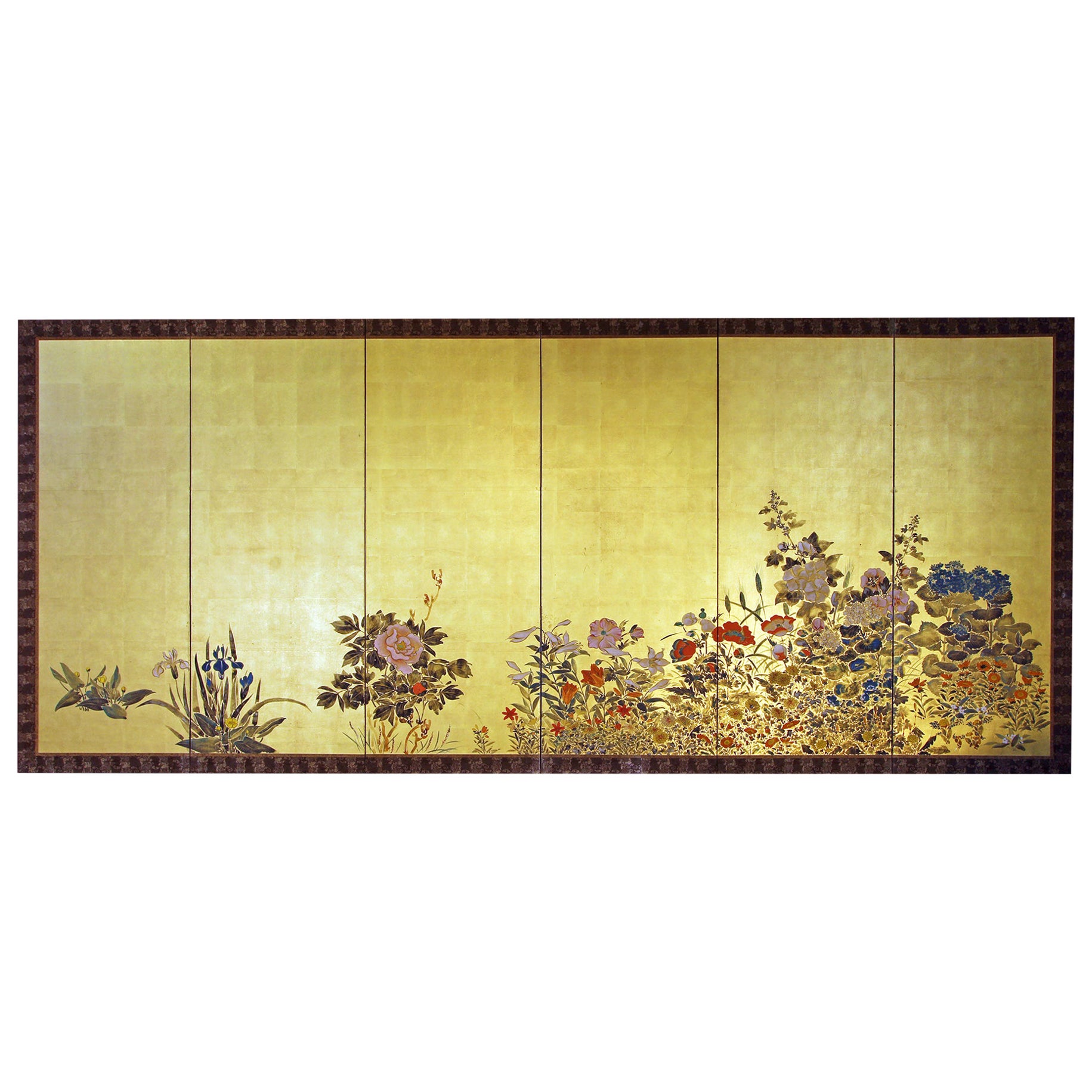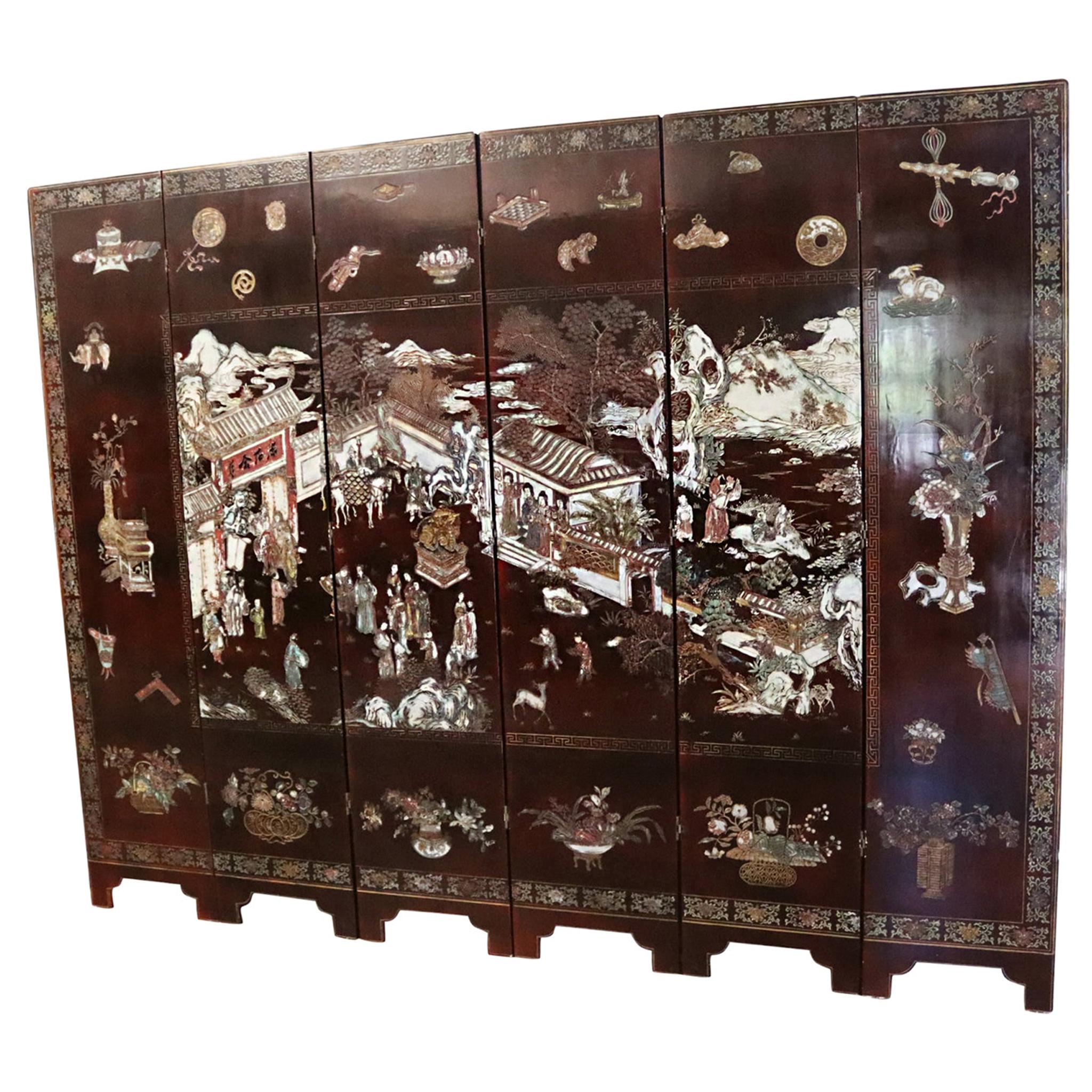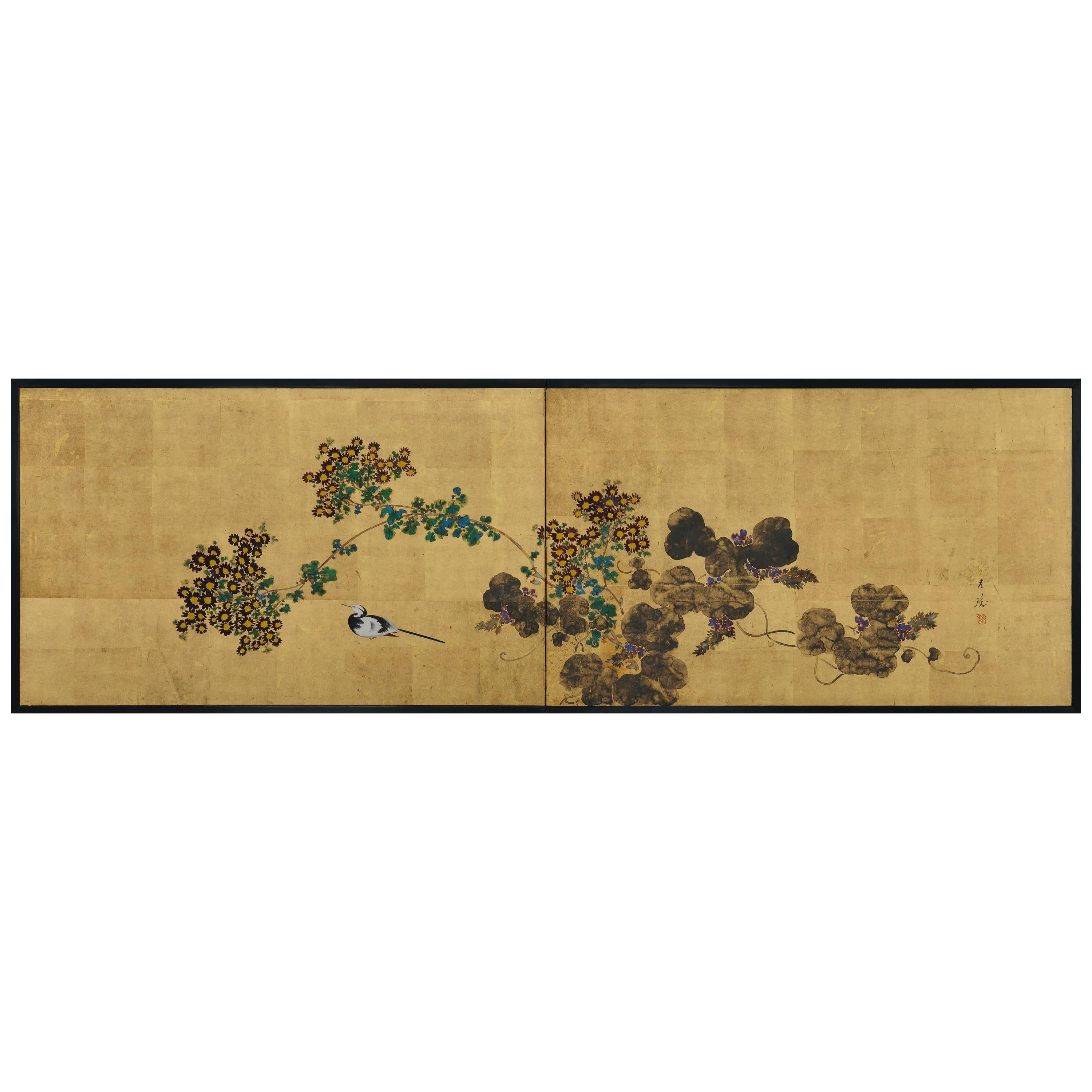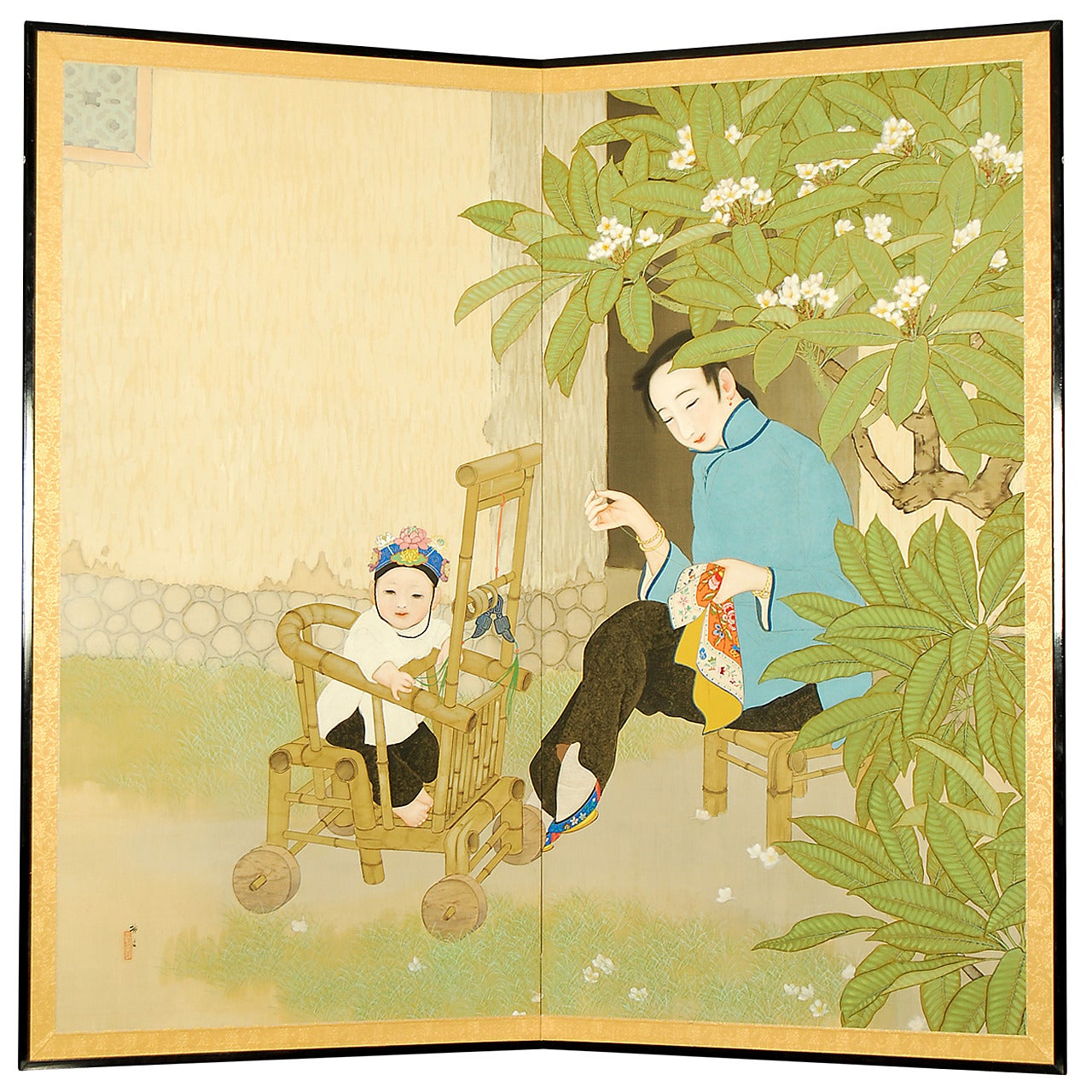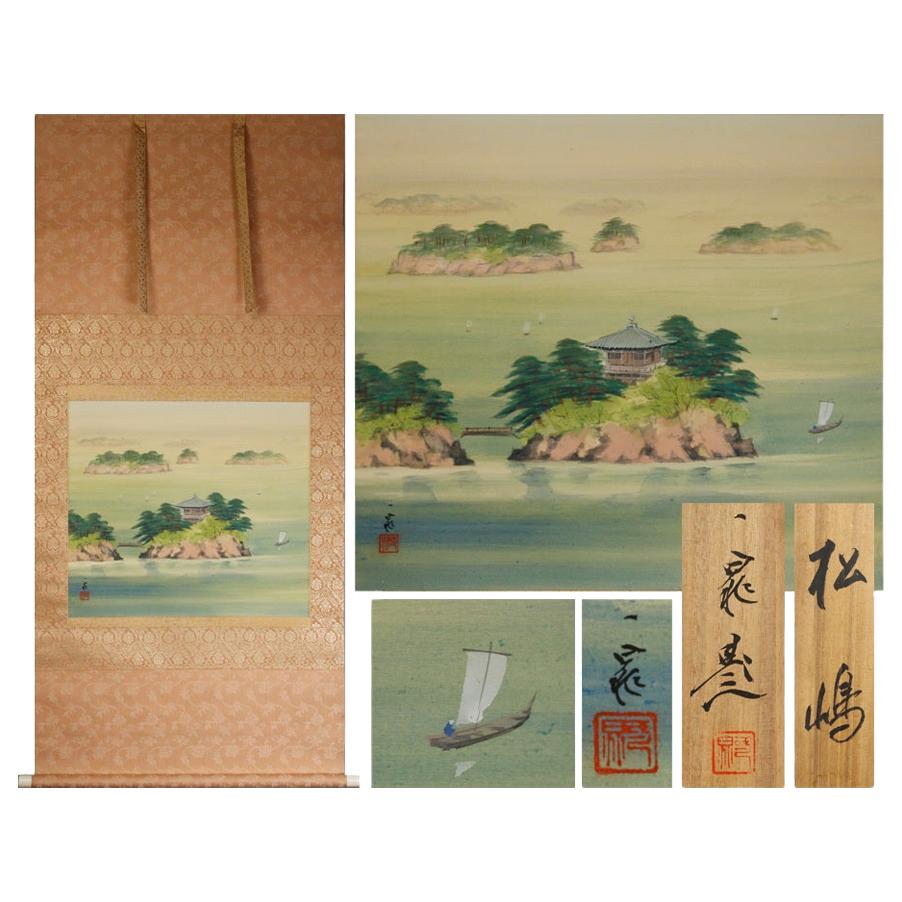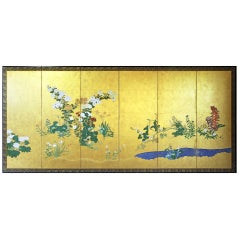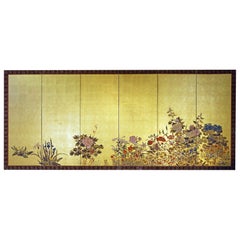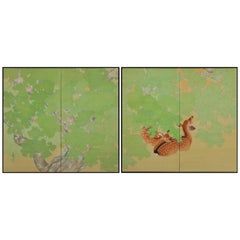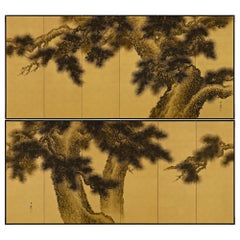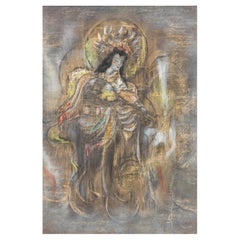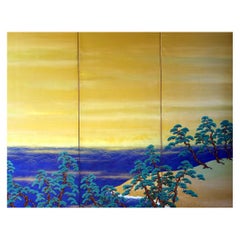
20th Century Japanese Folding Screen Sea Landscape Pine Trees Waves on the Beach
View Similar Items
Want more images or videos?
Request additional images or videos from the seller
1 of 7
20th Century Japanese Folding Screen Sea Landscape Pine Trees Waves on the Beach
About the Item
- Dimensions:Height: 67.33 in (171 cm)Width: 149.61 in (380 cm)Depth: 0.79 in (2 cm)
- Style:Taisho (Of the Period)
- Materials and Techniques:
- Place of Origin:
- Period:
- Date of Manufacture:1920
- Condition:The screen is sold with special supports to be hung on the wall.
- Seller Location:Brescia, IT
- Reference Number:1stDibs: LU5628222558052
About the Seller
5.0
Recognized Seller
These prestigious sellers are industry leaders and represent the highest echelon for item quality and design.
Established in 1981
1stDibs seller since 2021
15 sales on 1stDibs
Typical response time: 3 hours
More From This SellerView All
- Edo Landscape Japanese Folding ScreenBy Japanese StudioLocated in Brescia, ITRefined work by a painter from the first half of the 19th century, from the landscape of the "Rinpa" school by a painter from the end of the 18th century, the Rinpa school. Six panels painted in ink on gold leaf and "gofun" on vegetable paper. The flowers are made with the "gofun" technique, natural or pigmented white oyster powder. Rinpa is one of the major historical schools of Japanese painting. The style was consolidated by the brothers Ogata Korin (1658–1716) and Ogata Kenzan (1663–1743). This folding screen has a very clean design that leaves plenty of room for the beautiful golden landscape. It comes flat and you can easily hang it with our hooks. Lucio Morini...Category
Antique 18th Century Japanese Edo Paintings and Screens
MaterialsGold Leaf
- Landscape with Flowers, Japanese Folding ScreenLocated in Brescia, ITSix-panel screen of the "Rinpa school", painted with inks on gold leaf. Colorful and sunny variety of flowers painted with great skill by an anonymous Japanese artist, who skilfully...Category
Antique Early 19th Century Japanese Meiji Paintings and Screens
MaterialsGold Leaf
- 20th Century Spring Japanese Screen Hand PaintBy Japanese StudioLocated in Brescia, ITSix-panel screen of the "Rinpa" school, painted with mineral pigments on rice paper. Painting before the middle of the Showa period. Landscape depicting a cute "Sakura" tree in bloom, with flowers and flying birds. Very decorative screen with nice pastel colours. Can lay flat and can be hung on the wall, paper hinges are sturdy. Lucio Morini - Asian Fine Art...Category
20th Century Japanese Showa Paintings and Screens
MaterialsPaper
- 20th Century Showa Period Garden Folding Screen Two PanelsLocated in Brescia, ITOriental Spring Garden: Japanese two-panel screen painted on rice paper from the Showa period.Category
Late 20th Century Japanese Showa Paintings and Screens
MaterialsPaper
- 20th Century Showa Period Beautiful Spring Garden Folding Screen Two PanelsLocated in Brescia, ITJapanese screen with two doors painted with mineral pigments on rice paper. Early Showa period.Category
Late 20th Century Japanese Showa Paintings and Screens
MaterialsPaper
- Japanese Screen of Spring on Gold LeafLocated in Brescia, ITIt is a two-panel screen from the Taisho period, around 1920, beautifully painted in excellent detail. The best of Rinpa's school painting: large empty space that highlights a pair of mandarin ducks in the middle of the pond. On the right, flying birds give the painting a great lightness, under many multicolored flowers they celebrate spring. All very proportionate and pleasant, the dimension really interesting. Mineral pigments on gold leaf. It turns out Anonymous. Lucio Morini.Category
Early 20th Century Japanese Taisho Paintings and Screens
MaterialsGold Leaf
You May Also Like
- Early 20th Century Pair of Japanese Folding Screens, Deer Under Maple TreesLocated in Kyoto, JPDeer under maples Late Taisho period, circa 1925-1930 Pair of two-panel screens. Ink and pigment on silk. Signature: Goho Seal: Goho A pair of two-fold Japanese silk screens...Category
Vintage 1920s Japanese Taisho Paintings and Screens
MaterialsWood, Paper, Silk
- Early 20th Century Japanese Screen Pair - Ink Pine Trees on GoldLocated in Kyoto, JPImao Keisho (1902-1993) Pine Trees Early 20th Century, Circa 1930 Pair of six-panel Japanese screens. Ink on silk and gold leaf. Dimensions: Each screen H. 67.5” x 148” (172 cm x 376 cm) A pair of monumental six-panel Japanese pine screens by the renowned Nihonga artist Imao Keisho. Here Keisho entirely removed the background and brought the pine trees to the surface of the painting. This simplification of the elements makes the scene exceptionally direct and compelling and injects a very modern...Category
Early 20th Century Japanese Showa Paintings and Screens
MaterialsGold Leaf
- Painting of Guanyin Qing Dynasty 19/20th Century Color on SilkLocated in West Palm Beach, FLA painting of Guanyin Qing Dynasty 19/20th century color on silk; The deity depicted floating, attired in long robes, adorned with jewels and wearing...Category
20th Century Paintings and Screens
MaterialsSilk
- Early 20th Century Japanese Screen Pair, Fig Trees by Hiroe Kashu 'B.1890'Located in Kyoto, JPFig Trees Hiroe Kashu (b.1890) Taisho era, circa 1920 Pair of six-fold Japanese screens Ink, malachite, gold and silver on paper Dimensions: Each Screen measures H...Category
Early 20th Century Asian Taisho Paintings and Screens
MaterialsGold, Silver
- Pair of Chinese Reverse Glass Paintings, Early 20th CenturyLocated in Jimbaran, BaliThis pair of Chinese portraits depicting young women & their dogs were painted using a reverse glass painting technique. Painting in reverse on the opposite side of a piece of glass ...Category
Early 20th Century Chinese Qing Paintings and Screens
MaterialsGlass, Wood, Paint
$756 Sale Price / set20% Off - Early 20th Century Mongolian Vivid Small Thangka, 7845Located in Ukiah, CAOne of the most vivid small Thangkas I have ever owned. Purchased from a wealthy Mongolian collector along with 3 other fine small Thangkas in the 1990's from his very best personal pieces as a thank you for a long friendship. Painted thangka is 6.75 x 9 inches, frame is 13 x 15 1/8 inches. Custom mat and frame, with museum glass and silk matting. Exquisite. Not inexpensive for a small Thangka, but you won't find better. Probably early to mid 20th century (in reality many of the Mongolian Thangkas sold in the west as 19thC are early 20thC, as the environment there causes cloth and paper to usually soil, darken and degrade. The number of truly early Thangkas that are bright and clean are very few. Even most of the early/mid 20th Cones show great wear and soiling. This one almost sure lived all of its life in a large Gau box or in a drawer or trunk, as the colors look as bright as the day it was painted. It was very difficult 20 years ago to find pieces like this- today is nearly impossible. Many of my pieces like this end up...Category
Early 20th Century Mongolian Antiquities
MaterialsCanvas

